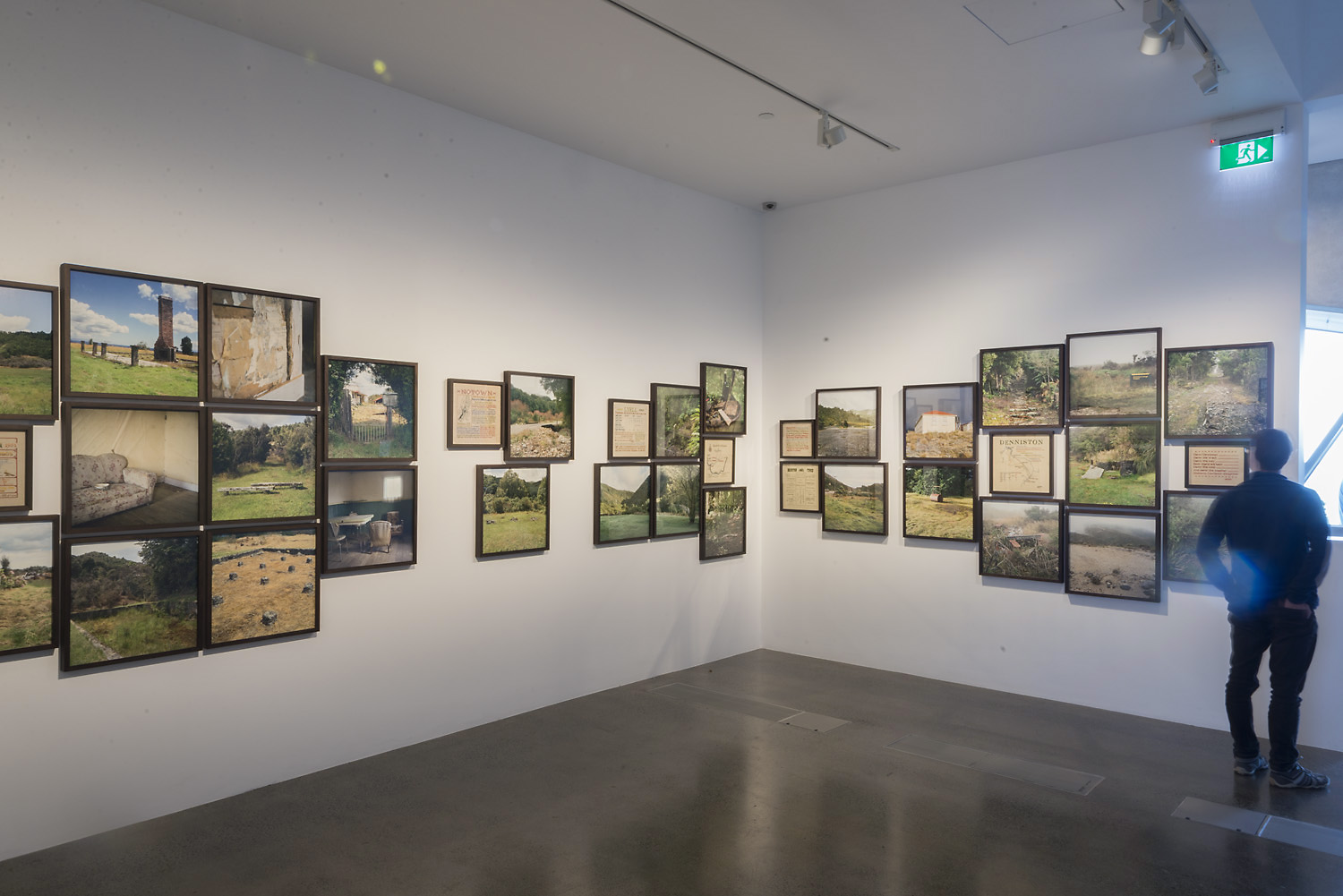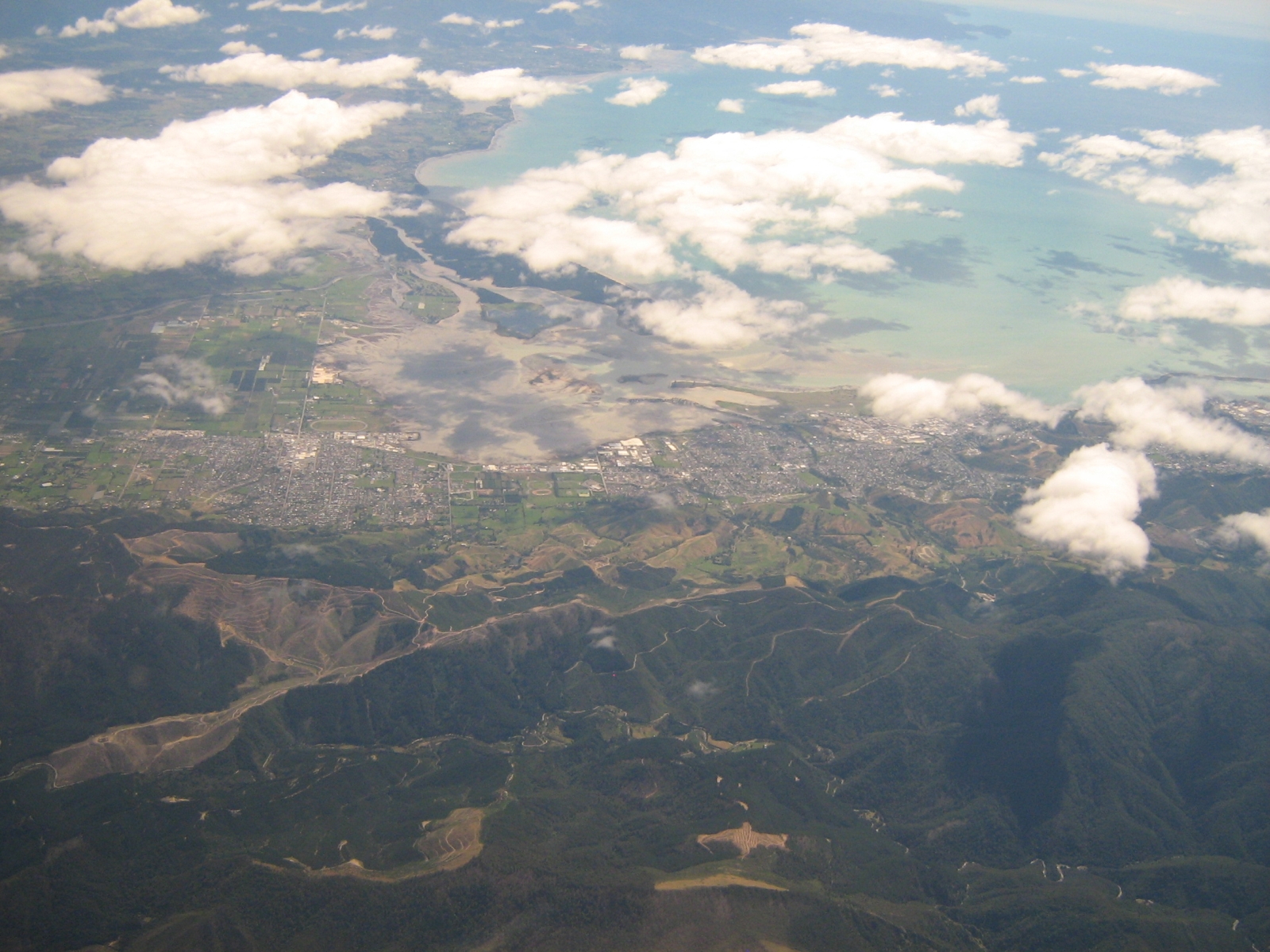|
Caroline McQuarrie
Caroline Lucy McQuarrie (born 1975) is a New Zealand artist and senior lecturer in photography at Massey University in Wellington. Life McQuarrie was born in 1975 in Greymouth, on the West Coast of the South Island. Her father Bob McQuarrie was a potter and her mother Barbara McQuarrie a textile artist. McQuarrie enjoyed drawing from an early age, and was influenced by family friends photographer Frank Simpson and potter Daphne Simpson who together ran Coast Craft in Greymouth; Daphne taught her to draw and paint, and she studied photography and painting in her final year of high school. At the University of Canterbury, she studied photography, completing a Bachelor of Fine Arts degree in 1997. Artistic career After graduating, McQuarrie worked in photography laboratories in the United Kingdom, learning photo retouching and Adobe Photoshop. After returning to New Zealand in 2002 she began a Master of Fine Arts at Massey University in Wellington, completing it in 2005; her ... [...More Info...] [...Related Items...] OR: [Wikipedia] [Google] [Baidu] |
Greymouth
Greymouth () (Māori language, Māori: ''Māwhera'') is the largest town in the West Coast, New Zealand, West Coast List of regions in New Zealand, region in the South Island of New Zealand, and the seat of the Grey District Council. The population of the whole Grey District is , which accounts for % of the West Coast's inhabitants. The Greymouth urban area had an estimated population of A large proportion of the District, 65%, is part of the Conservation Estate owned and managed by the Department of Conservation making Greymouth a natural centre for walkers and Tramping in New Zealand, trampers. Location The town is located at the mouth of the Grey River (New Zealand), Grey River, on a narrow coastal plain close to the foot of the Southern Alps. In clear weather, Aoraki / Mount Cook can be clearly seen to the south from near the town. The mouth of the river divides the town into three areas: Blaketown, close to the river's mouth on the south bank; Karoro, New Zealand, Karoro, ... [...More Info...] [...Related Items...] OR: [Wikipedia] [Google] [Baidu] |
Photogram
A photogram is a Photography, photographic image made without a camera by placing objects directly onto the surface of a light-sensitive material such as photographic paper and then exposing it to light. The usual result is a negative shadow image that shows variations in tone that depends upon the transparency of the objects used. Areas of the paper that have received no light appear white; those exposed for a shorter time or through transparent or semi-transparent objects appear grey, while fully-exposed areas are black in the final print. The technique is sometimes called cameraless photography. It was used by Man Ray in his #Man Ray's 'rayographs', rayographs. Other artists who have experimented with the technique include László Moholy-Nagy, Christian Schad (who called them "Schadographs"), Imogen Cunningham and Pablo Picasso. Variations of the technique have also been used for scientific purposes, in shadowgraph studies of flow in transparent media and in high-speed Schl ... [...More Info...] [...Related Items...] OR: [Wikipedia] [Google] [Baidu] |
Carnegie Building (Hokitika)
The Westland District Library is the public library in Hokitika, on the West Coast of New Zealand. Beginning as the Hokitika Literary Society in 1866, it occupied a Carnegie library building from 1908 as the Hokitika Free Public Library, moving out in 1975. Origins The population of Hokitika increased rapidly during the West Coast gold rush of the 1860s. In 1866 the town formed a literary society, with membership costing 5 shillings a quarter. By 1867 the society had acquired 600 books but nowhere to house them, and began raising funds for a library. The Hokitika Town Hall and Literary Society was a two-storey wooden building designed by town surveyor and architect William Barnett Armson in one week and built on Revell Street over five months in 1869. Two rooms were set aside as a reading room and library, with their own entrance; two more were devoted to museum exhibits, the nucleus of the Hokitika Museum. The reading room was open from 9:00 am to 10:00 pm six days, and Su ... [...More Info...] [...Related Items...] OR: [Wikipedia] [Google] [Baidu] |
Blue Oyster Art Project Space
Blue Oyster, located in Dunedin’s city centre, is a space that presents contemporary experimental art projects. Blue Oyster included over 1,000 artists in more than 270 projects over its first 10 years and it continues to provide a space for artists to present their work. History and operations As a not for profit organisation, the gallery serves the local and national art community as a venue for exhibiting alternative and non-commercial art work that offers an environment of criticality, support and learning to emerging and experimental artists. The space opened in 1999 after the project spaces Honeymoon Suite and Everything Incorporated closed down. The founding artists Wallace Chapman, Kate Plaistead, Emily Barr, Steve Carr, and Douglas Kelaher set up the Blue Oyster Arts Trust, and once the trust was established it took over the venue of Everything Incorporated. Blue Oyster's aim is to broaden an interest and understanding of contemporary art by “acting as an incubator ... [...More Info...] [...Related Items...] OR: [Wikipedia] [Google] [Baidu] |
Harakeke
''Phormium tenax'' (called flax in New Zealand English; in Māori; New Zealand flax outside New Zealand; and New Zealand hemp in historical nautical contexts) is an evergreen perennial plant native to New Zealand and Norfolk Island that is an important fibre plant and a popular ornamental plant.Roger Holmes and Lance Walheim. 2005. ''California Home Landscaping'', Creative Homeowner Press The plant grows as a clump of long, straplike leaves, up to two metres long, from which arises a much taller flowering shoot, with dramatic yellow or red flowers. Despite being commonly known as 'flax', harakeke is of the genus ''Phormium'', a monocot, and is a leaf fibre, whereas flax (linen) is of the genus ''Linum'', a rosid, and is a bast fibre (which comes from the stem of the plant). The two plants have an evolutionary extremely distant relationship with each other. The fibre has been widely used since the arrival of Māori to New Zealand, originally in Māori traditional textiles an ... [...More Info...] [...Related Items...] OR: [Wikipedia] [Google] [Baidu] |
Sampler (needlework)
A needlework sampler is a piece of embroidery or cross-stitching produced as a 'specimen of achievement', demonstration or a test of skill in needlework. It often includes the alphabet, figures, motifs, decorative borders and sometimes the name of the person who embroidered it and the date. The word ''sampler'' is derived from the Latin , which means 'example'. History The earliest sampler extant is a spot sampler, i.e. one having randomly scattered motifs, of the Nazca culture in Peru formerly in the Museum of Primitive Art, New York City. It is estimated to date from ca. 200 BCE –300 CE and is worked in cotton and wool pattern darning on a woven cotton ground. It has seventy-four figures of birds, plants and mythological beings. Coptic sampler fragments of silk on linen in double running stitch and pattern darning have been found in Egyptian burial grounds of 400–500 CE. These are pattern samplers having designs based on early Christian symbols. Samplers were known to b ... [...More Info...] [...Related Items...] OR: [Wikipedia] [Google] [Baidu] |
Nelson, New Zealand
Nelson () is a List of cities in New Zealand, city and Districts of New Zealand, unitary authority on the eastern shores of Tasman Bay at the top of the South Island of New Zealand. It is the oldest city in the South Island and the second-oldest settled city in the country; it was established in 1841 and became a city by British royal charter in 1858. Nelson City is bordered to the west and south-west by the Tasman District and to the north-east, east and south-east by the Marlborough District. The Nelson urban area has a population of , making it New Zealand's 15th most populous urban area. Nelson is well known for its thriving local arts and crafts scene; each year, the city hosts events popular with locals and tourists alike, such as the Nelson Arts Festival. Naming Nelson was named in honour of Admiral Horatio Nelson, 1st Viscount Nelson, Horatio Nelson, who defeated both the First French Empire, French and Spanish fleets at the Battle of Trafalgar in 1805. Many roads ... [...More Info...] [...Related Items...] OR: [Wikipedia] [Google] [Baidu] |
Māori People
Māori () are the Indigenous peoples of Oceania, indigenous Polynesians, Polynesian people of mainland New Zealand. Māori originated with settlers from East Polynesia, who arrived in New Zealand in several waves of Māori migration canoes, canoe voyages between roughly 1320 and 1350. Over several centuries in isolation, these settlers developed Māori culture, a distinct culture, whose language, mythology, crafts, and performing arts evolved independently from those of other eastern Polynesian cultures. Some early Māori moved to the Chatham Islands, where their descendants became New Zealand's other indigenous Polynesian ethnic group, the Moriori. Early contact between Māori and Europeans, starting in the 18th century, ranged from beneficial trade to lethal violence; Māori actively adopted many technologies from the newcomers. With the signing of the Treaty of Waitangi, Treaty of Waitangi/Te Tiriti o Waitangi in 1840, the two cultures coexisted for a generation. Rising ten ... [...More Info...] [...Related Items...] OR: [Wikipedia] [Google] [Baidu] |
Thomas Brunner
Thomas Brunner (April 1821 – 22 April 1874) was an English-born Surveying, surveyor and explorer remembered for his exploration of the West Coast, New Zealand, West Coast of New Zealand's South Island. Brunner was born in April 1821 in Oxford. When he was fifteen, he began to learn architecture and surveying. In 1841, he joined the New Zealand Company in its venture to establish a settlement in the north of the South Island of New Zealand, to be called Nelson. As well as working as an apprentice surveyor and laying sections and roads for the new settlement, he explored the interior, seeking pastoral land for a growing colony. In 1846 he undertook extensive journeys with Charles Heaphy and a Ngāti Tūmatakōkiri tohunga named Kehu towards and along the West Coast. In December 1846, Brunner commenced an expedition, accompanied by four Māori including Kehu, which began from Nelson. The party travelled down the Buller River and along the West Coast reaching as far south as Tit ... [...More Info...] [...Related Items...] OR: [Wikipedia] [Google] [Baidu] |
Vanessa Crowe
Vanessa may refer to: Arts and entertainment * ''Vanessa'' (Millais painting), an 1868 painting by Pre-Raphaelite artist John Everett Millais * ''Vanessa'', a 1933 novel by Hugh Walpole * ''Vanessa'', a 1952 instrumental song written by Bernie Wayne and performed by Hugo Winterhalter * ''Vanessa'', a song by Grimes and d'Eon from Darkbloom * ''Vanessa'' (opera), a Samuel Barber opera that premiered in 1958 * ''Vanessa'' (1977 film), a 1977 West German film featuring Olivia Pascal * ''Vanessa'' (Mexican TV series), 1982 Mexican telenovela starring Lucía Méndez * ''Vanessa'' (UK TV series), British talk show presented by Vanessa Feltz * ''Vanessa'', former name of Canadian television channel Vivid TV People * Vanessa (name), a female given name and list of persons named Vanessa * Esther Vanhomrigh, for whom Jonathan Swift coined the name Fictional characters * Vanessa (''King of Fighters''), a character in SNK Playmore's ''The King of Fighters'' video game series * Van ... [...More Info...] [...Related Items...] OR: [Wikipedia] [Google] [Baidu] |





